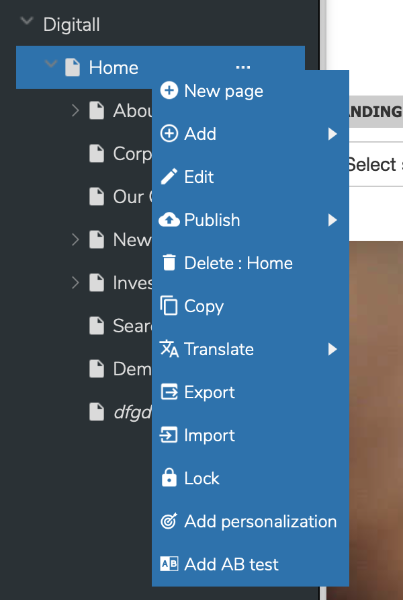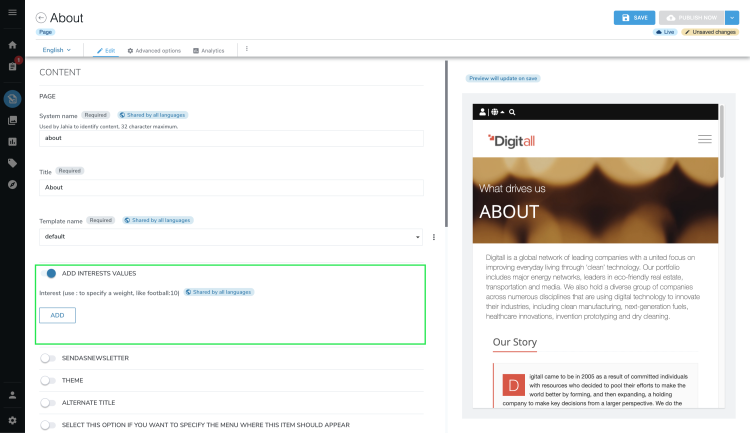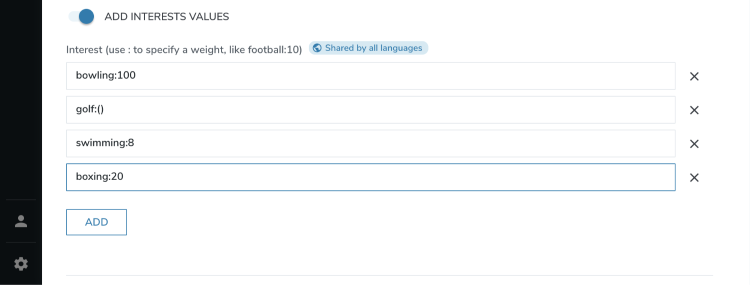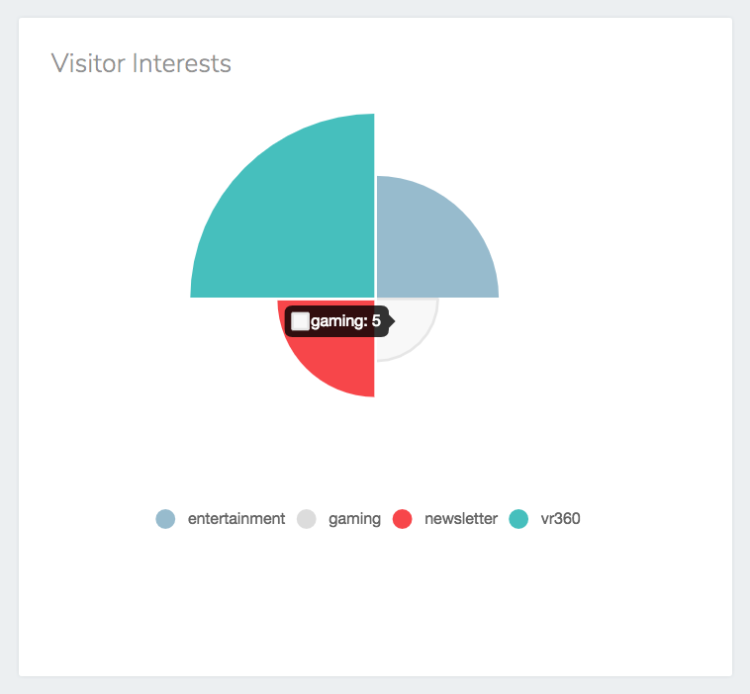Adding interests to pages
Interests enable you to build a meaningful profile of your visitors without bothering them with direct questions. jExperience uses interests to creates profiles based on actions that users perform and on what they view. Then, jExperience refines the profiles progressively with each visit until you are able to engage in a personalized conversation.
You add interests to your content pages and assign them a value or scoring weight. Interests are collected and stored in visitor profiles as they navigate through your pages, silently creating a comprehensive profile.
This topic describes how the interests work, shows you how to assign interests, and provides some examples of usage and best practices.
About interests
An interest is defined by a string (one or more words) and a numerical value (the weight). Interests enable you to perform an implicit classification of your audience and define certain characteristics based on what the visitors have seen. For instance, you can define whether a user is more interested in technical or marketing content, if they are interested in a certain type of product, or a certain look and feel.
How interests are collected
When a visitor hits a page that contains one or several interests, jExperience stores this information in a visitor profile. If the interest does not exist in a visitor's profile, jExperience adds an entry and a scoring weight value defined in the visited page to the profile. By default, the value is 1. If the interest does exist in the visitor profile, jExperience adds the weighted value of the current page to the existing total that is stored in the profile.
Applying interests to content
Interests are applied to pages. In Jahia, a page with all its content is not a single object but a collection of multiple items. When a visitor views a page, jExperience collects interests values that are assigned to that page (the item identified in the URL and displayed as a page) but not all the values for all the items that compose the page.
You can use interests the way you want, depending on your own needs and strategy.
- jExperience does not impose its own schema of analysis, its own predefined list of interests, and does not limit the number of interests you can use on your site.
- You do not need to prepare interests in advance a list or predeclare them to be able to flag your site pages.
Assigning an interest
You apply interests to pages in Page Composer.
To add an interest to a page:
- Select a page in the site tree, right-click and click Edit.

You can also select an item inside a page that does not appear directly into your site map but can be rendered as full page like, for instance, a news item. - In Content editior, scroll down and enable Add interest values.

- Click Add and provide the name of the interest that jExperience will collect when a visitor comes to the page. To specify a weight for the interest, add a colon followed by a numeric value, for example,
Tennis:5. If you do not specify a value, jExperience assumes that the value is 1. You can add as many interests on a given page as necessary

- Click Save.
You must publish a page to start collecting interests you have declared. jExperience starts to collect interests as soon as they are available in pages that are accessible to visitors.
Viewing interests in the visitor profile
In any visitor profile page, under Profiling, you can see a section named Interests.
That section shows a graphic with the eight most important interests of this visitor. Thanks to this graph, you can see the visitor profile portrait at a glance.
By hovering your mouse over the different interests, you can see the number of points collected for each of those interests.
Interests collection consistency
This rule applies to avoid distorting profiles with non-relevant behaviors, such as automatic page refresh or users coming back during this navigation session not because they have a particular interest but for a simple navigation purpose. By eliminating this data noise, the results are much more relevant because if a visitor comes back later to re-visit your site and goes on pages he has already seen during his previous visits, chances are that there is a particular interested in them.
Using interests
You can use interests:
- As conditions for personalization.
- As conditions for segmentation.
- As conditions for user extraction.
- For automation. If interest A is higher than X (where X is a figure you choose), then send an email to a sales representative. If interest B is higher than X, then assign it to a list. If interest C is higher than X, then copy this data into Salesforce, etc
